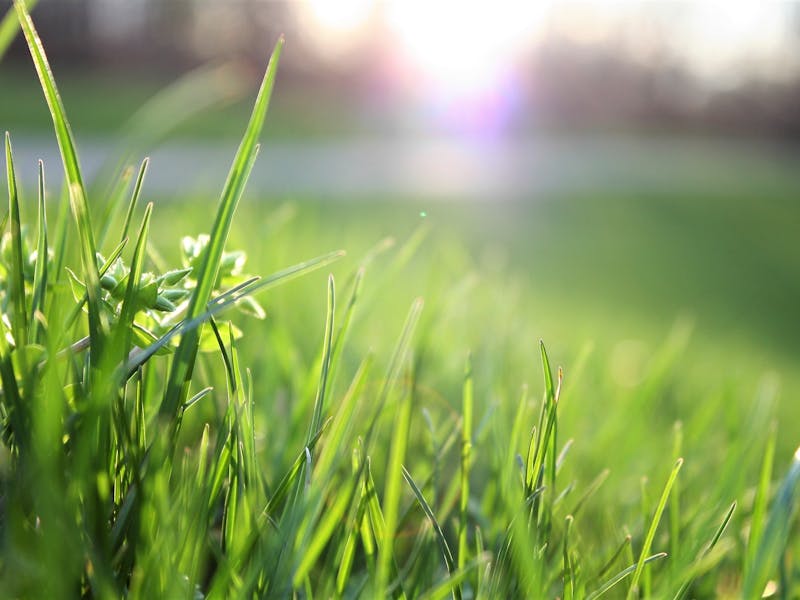6 Low-Maintenance Grasses that Resist Drought

Drought resistance is a requirement for landscapes. It saves water and keeps an outdoor space beautiful. Especially in regions with low water resources that are prone to drought. Appropriate grass types are essential for a lovely yard. They will use less water and leave your lawn lush and green. The best grasses for a landscape that can resist drought conditions will be covered in this article.
Plus, we’ll tell you how to maintain and develop a water-efficient lawn.
Buffalo Grass
Grass native to warm-season areas is buffalo grass. With great drought tolerance and low maintenance, it’s a great choice. This tough grass type forms dense lawns. Once established, the fine-textured grasses require little watering or care. Buffalo grass grows well in soil that drains well and in full sun. It works well in warm, dry climates. It greens up in the spring. It stays green through the summer with little water. This makes it ideal for homeowners who want a low-water lawn.
Zoysiagrass
Warm-season grass is zoysiagrass. It is renowned for withstanding drought well and growing in a dense, lush manner. This type of grass can thrive in various pH levels and types of soil. It grows well in both full sun and partial shade. Lawns featuring zoysiagrass are thick and have an appearance similar to carpets. It requires less maintenance and watering than conventional turf grasses.
Once established, Zoysiagrass grows deep roots. These roots help it withstand drought and heat stress. If you want to cut lawn care costs and save water, Zoysia is a great choice.
Bermudagrass
The Bermudagrass belongs to a group of grasses that grow during the summer. Plants like this are highly favoured among plant lovers since they can resist drought, grow quickly, and withstand foot traffic at the same time. This robust grass needs well-draining soil and full light. In hot, dry climes, it is frequently utilised for lawns, golf courses, and sports grounds. After it matures, Bermudagrass doesn’t need a lot of water. When there’s no rain, the plant goes dormant, but once the rain comes back, it turns green again. Additionally, they keep your grass green and lush during the growing season.
Grow Tall Fescue Grass
Cooler temperatures are perfect for tall fescue. The plant’s reputation is built on its deep roots, ability to withstand dry spells and lush green colour. This adaptable grass species does well in many climates and soil types. It is good for both full sun and partial shade. Tall fescue grows quickly from seed. It forms a dense, tough lawn. It needs less water and care than traditional turf grasses. It has great heat and drought tolerance once established. This makes it a great option for homeowners. They want a water-wise lawn in regions with hot, dry summers.
Fine Fescue
Fescue grasses belong to the cool-season grass family. Despite their delicate appearance, these plants thrive in shady areas and are able to endure droughts. These grass species are adaptable. They do well in cool, moist regions. They flourish in shady locations where other grasses have difficulty thriving.
Fine fescue requires less fertiliser and water in comparison to standard turf grasses. Once they are set up, they can withstand severe drought situations. There are several varieties of fescue, including creeping red fescue, hard fescue, and chewing fescue. Every variety offers special qualities and advantages for a landscape resistant to drought.
Grow Kentucky Bluegrass
Kentucky bluegrass is among the most favoured cool-season grasses. Its lush foliage and profusion of greenery are the reasons for its popularity. This grass thrives in spite of the bitter summers and icy winters. Both full and partial shade are beneficial to its growth. It’s easy to grow Kentucky bluegrass in a flourishing lawn. It requires less upkeep and watering than warm-season grass.
It can handle moderate drought once established. It has deep roots. They help it endure heat and dryness. Regular irrigation and good lawn care promote healthy growth. They also help keep a vibrant, drought-resistant lawn.
Conclusion
For a landscape to withstand drought, selecting the appropriate grasses is essential. With little care and water conservation, outdoor spaces remain lovely all year round. Buffalograss, zoysiagrass, and bermudagrass are some of the warm-season grasses obtainable. Cool-season grasses, including tall fescue, fine fescue, and Kentucky bluegrass, can be grown. You can get a landscaping company to help you pick out and plant the right plants. A solution exists for every kind of soil, weather, and visual preference. It is possible to have a drought-resistant and water-wise lush, green lawn.





